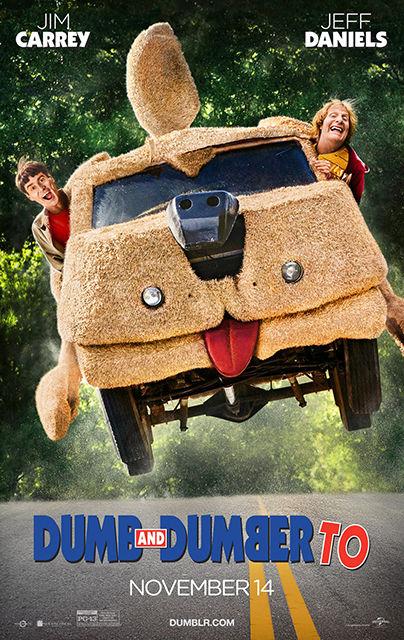The Dumb and Dumber (1994) movie contained genuine pathos—although it certainly utilized lowbrow stunts such as gross-out humor and shock-value imagery, it never forgot that at its core, its plot revolved around two close (albeit simple) friends seeking to escape the trap of everyday life. Its sequel, Dumb and Dumber To, spared no sympathy for anyone, not even its protagonists.
While its predecessor focuses on the exploits of two unlikely yet good-natured simpletons, Dumb and Dumber To employs its heroes as unchanging plot devices to disastrous effect. The “Flanderization” of main characters Harry Dunne (Jeff Daniels) and Lloyd Christmas (Jim Carrey) renders the two completely brainless and willfully ignorant of all concerns but their own.
The movie documents Harry and Lloyd’s journey to find Harry’s daughter, Penny, who he gave up for adoption years ago. They feel little tension as the two traipse past their obstacles for, decidedly, what constitutes a selfish motive: to get Penny to donate a kidney to Harry. Penny, played by Rachel Melvin (i.e., the poor man’s Zooey Deschanel), makes scenes fun to watch as she lends a sort of innocence to her respective dimwittedness.
As far as jokes go, Dumb and Dumber To takes on a surprisingly mean spirit. Though modern comedies have evolved since 1994 to represent a more inclusive and less minority-targeting sense of humor, such as with This Is the End and 22 Jump Street, Dumb and Dumber To clings to the antiquated ways of the past. This becomes apparent as Harry and Lloyd, who reminisce repeatedly about what their lives could have been, continue to whoop at young women, speak in stunted vernacular, and engage in toilet humor to appeal to their presumed target audience, 13-year-old adolescents.
Another surprising tactic comes from how many of the jokes rely on the same standards that govern the comments that receive the most votes on YouTube videos. This prompts viewers to laugh at people in wheelchairs, women considered unattractive simply because they’ve aged, casually transphobic comments and people who do not speak English well. This comes off as distasteful, lazy and lends an air of “It’s all in good fun!” to several harmful–isms.
The most sincere bit of the movie takes place within the first five minutes, which reveals how Harry has come to visit Lloyd every week for 20 years in the hospital—you know, the clip that’s shown in every commercial. Daniels’ heartfelt way of addressing his old partner is the closest the movie comes to reaching the heights of the original Dumb and Dumber. Additionally, the scene in which Penny and her mother Fraida (Kathleen Turner) first meet comes off as authentically sweet thanks to Turner’s stellar performance.
The direction works. It’s competent enough, but provides nothing new or impressive. The film follows a clean and easy style, which I suppose is important to an effort like this—the director likely doesn’t want to confuse the kids watching. The music that plays all through Lloyd and Harry’s miserable antics creates enjoyment among listeners, and, ultimately, gives more to the movie than it deserves.
Perhaps the worst aspect of the movie stems from what viewers gain from watching it: nothing whatsoever. Adults won’t find it funny, it won’t make you think about anything worth thinking about, and it undoubtedly won’t do anything to advance the credibility of either Daniels or Carrey. One has to wonder, after Eternal Sunshine of the Spotless Mind and The Truman Show, after Terms of Endearment and The Newsroom, why Carrey and Daniels continue to participate in vanity projects, such as Dumb and Dumber To.
In the end, Dumb and Dumber To serves as an uncomfortable reminder that Jim Carrey and Jeff Daniels could both do better things. Just as Lloyd and Harry perpetually trap themselves in the adolescent mindsets they sought to escape in Dumb and Dumber, Carrey and Daniels seem stuck taking roles they should have long grown out of.








